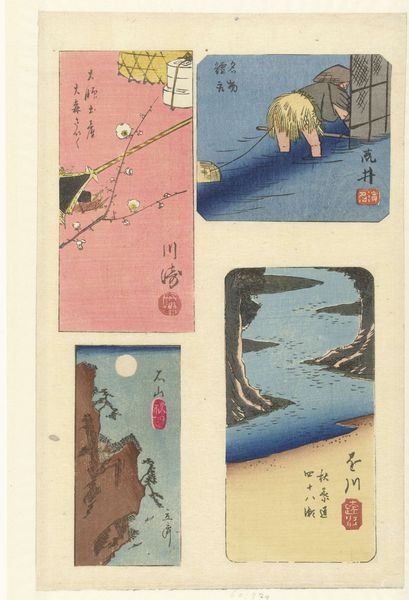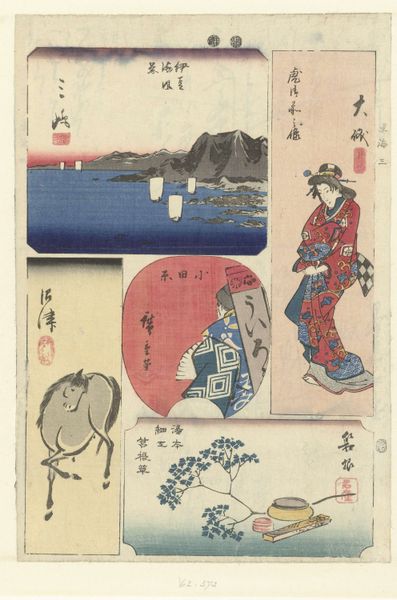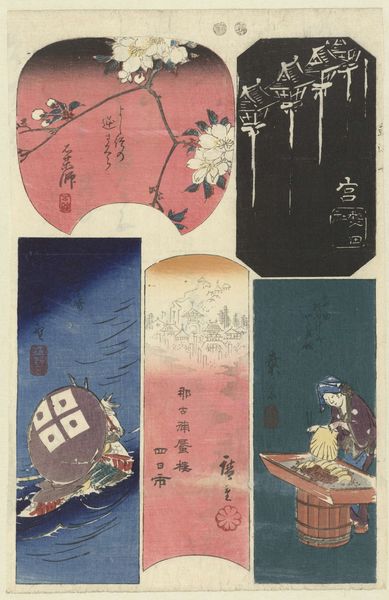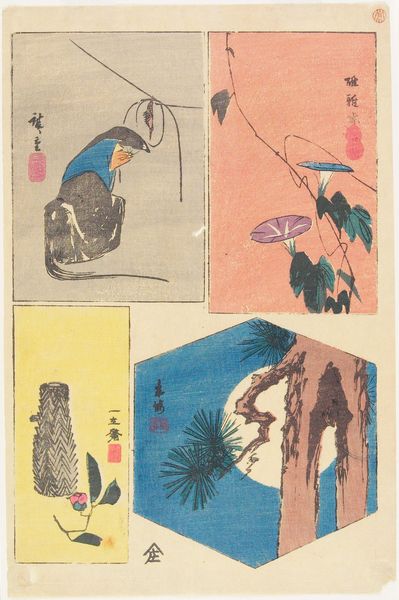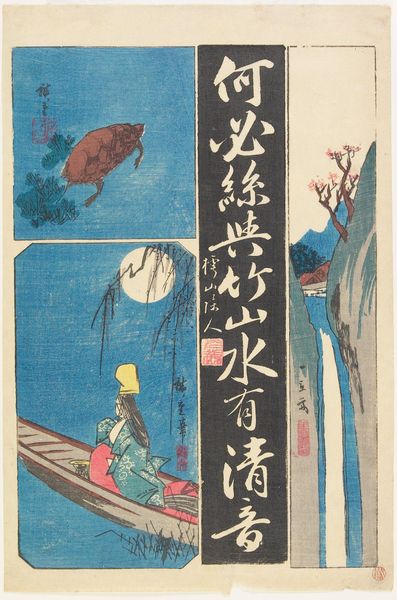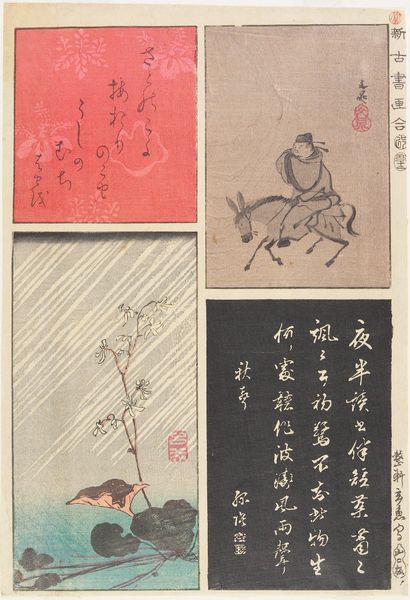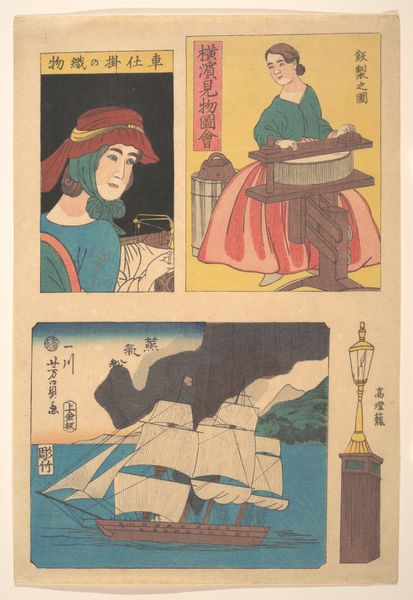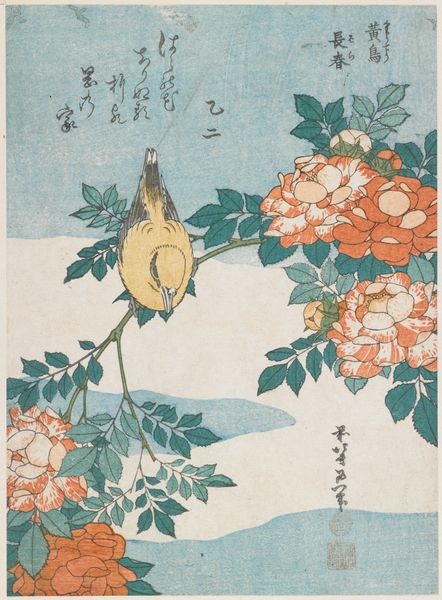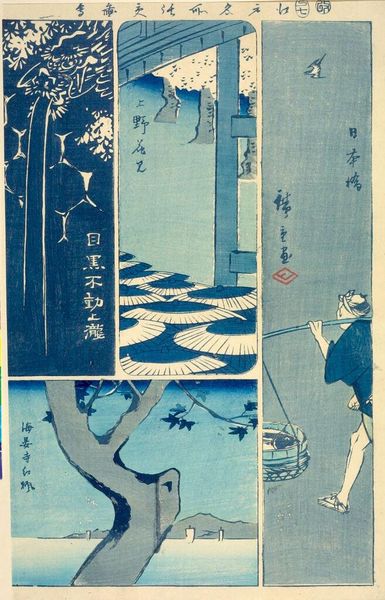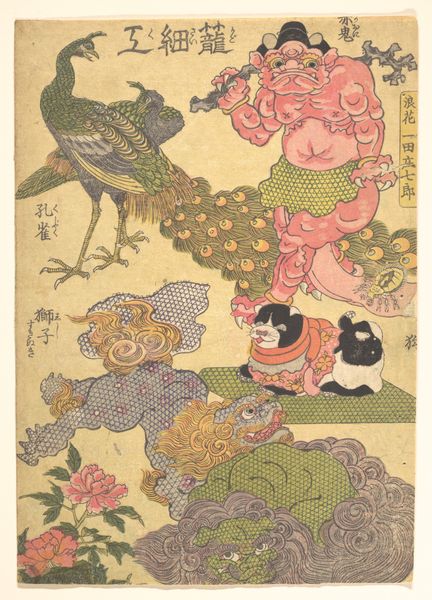
print, ink, woodblock-print
# print
#
landscape
#
ukiyo-e
#
ink
#
woodblock-print
#
orientalism
Dimensions: 14 3/16 × 9 7/8 in. (36.1 × 25.1 cm) (image, vertical ōban)
Copyright: Public Domain
This is "Shibaura," a woodblock print made by Utagawa Hiroshige in 1840s Japan. Woodblock prints are fascinating because they rely on a whole chain of skilled labor: the artist, the carver, and the printer all collaborating. Consider the physical properties of the wood itself. The carver would have to be incredibly precise, using specialized tools to create the intricate lines and details we see here. Notice the flat, almost graphic quality of the image. That's a direct result of the wood's resistance to the carving tools, and the way ink sits on its surface. The printer would then carefully apply ink to the block and press it onto paper, building up layers of color and texture. The success of prints like these are directly tied to the rise of a merchant class, the availability of paper and wood, and a system of distribution. Thinking about the means of production allows us to appreciate not only Hiroshige's artistic vision, but also the complex social and economic context in which this print was made.
Comments
No comments
Be the first to comment and join the conversation on the ultimate creative platform.

